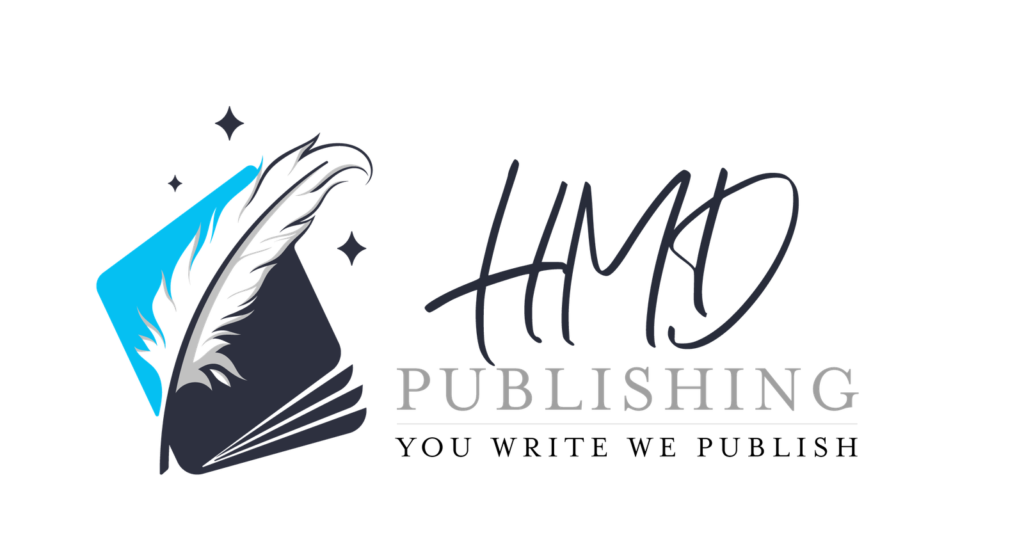The landscape of self-publishing in 2025 is being fundamentally reshaped by sophisticated AI tools for authors that touch every aspect from writing to digital book marketing and reader engagement strategies. As Amazon KDP trends continue to favor technologically-savvy creators, the future for indie authors lies in strategically embracing AI assistance while maintaining the authentic human elements that readers continue to value.
The Evolution of AI Writing Partners: From Assistants to Collaborators
By 2025, AI writing tools have evolved from simple assistants to sophisticated creative collaborators capable of preserving an author’s unique voice. Advanced neural networks are achieving 95%+ author voice preservation while cutting first draft completion time by 50-60%, allowing authors to focus on creative direction rather than execution.
Genre-specific AI writing models trained on bestselling patterns are now available for romance, fantasy, thriller, and non-fiction categories. These specialized AI co-writing tools understand the nuances of each genre’s pacing, tropes, and reader expectations without forcing authors into formulaic constraints.
The industry is also establishing ethical standards, with 65% of platforms now requiring transparency about AI assistance levels. This shift toward honesty about collaboration has actually increased reader acceptance rather than diminishing the perceived value of an author’s work.

Hyper-Personalized Editing Systems: Beyond Grammar and Style
Traditional editing tools focused on grammar and spelling are being replaced by AI developmental editing systems with far more sophisticated capabilities. These new tools can identify plot inconsistencies, character development issues, and pacing problems with 90% accuracy compared to professional human editors.
Reader emotion prediction algorithms now allow authors to optimize manuscript engagement before publication. By analyzing how specific passages might affect different reader demographics, these tools help authors fine-tune emotional impact without test readers.
Comparative analysis tools have become invaluable for benchmarking manuscripts against bestseller patterns while preserving unique voice. Instead of forcing conformity, these systems identify what makes successful books work emotionally and structurally, then suggest targeted improvements to the author’s existing material.
Visual Storytelling Revolution: AI-Enhanced Book Design
One-prompt AI book design systems have reached an 85% marketplace acceptance rate compared to professional designers. Authors can now generate dozens of market-tested cover options by describing their book’s themes and target audience in a single detailed prompt.
Adaptive formatting AI has transformed interior book design, automatically optimizing layouts for different reading platforms and accessibility requirements. These tools ensure books look perfect whether read on phones, tablets, e-readers, or in print formats, while meeting all accessibility standards for visually impaired readers.
Custom illustration generation engines are creating character art, maps, and concept visuals at 1/10th of traditional costs. These advances are part of the broader transformation reshaping the future of self-publishing beyond just visual elements.

The Voice Renaissance: Next-Generation Audiobook Production
The audiobook market has been transformed by multi-voice synthetic narration achieving indistinguishable-from-human quality ratings in blind tests. Authors can now produce professional-quality audiobooks at 10-15% of traditional recording costs, making audio versions accessible even for debut authors.
Emotional voice modeling technology adjusts tone based on narrative context, creating truly engaging listening experiences. The technology detects emotional cues in the text and adjusts pacing, emphasis, and vocal characteristics to match the intended mood of each scene.
Direct-to-translation audio pipelines are enabling simultaneous publishing in 12+ languages, dramatically expanding global reach. Authors can now release multilingual audio versions on the same day as their text publications, without the months of delay previously required for translation and voice talent scheduling.
Precision Marketing Intelligence: AI-Driven Audience Targeting
Reader DNA algorithms have revolutionized marketing by identifying micro-targeted audience segments with 78% greater precision than traditional demographic approaches. These reader targeting algorithms analyze purchasing patterns, reading behaviors, and content preferences to find the perfect match between books and potential readers.
Dynamic ad creation tools now generate platform-specific marketing assets with 65% higher conversion rates than standard approaches. These systems automatically create variations optimized for different platforms’ unique requirements and audience behaviors, whether for Amazon, BookTok, Instagram, or niche reader communities.
Real-time optimization systems continuously adjust campaigns based on hourly performance data rather than daily or weekly reviews. This immediate feedback loop allows for much faster conversion analytics and campaign refinement, reducing wasted ad spend and increasing ROI.
The Algorithmic Advantage: Mastering Retail Visibility
The 2025 Amazon algorithm prediction tools now provide 72% accurate visibility forecasting, helping authors understand how specific publishing decisions will impact discoverability. These tools simulate how changes in categories, keywords, pricing, and content will likely affect a book’s positioning in search results and recommendation engines.
Keyword optimization engines have become essential for identifying underserved search terms with high conversion potential. Rather than competing for oversaturated terms, these tools help authors find the specific phrases that readers are searching for but aren’t being well-served by existing titles.
Strategic category placement has been transformed by AI market analysis that identifies optimal visibility opportunities. By analyzing competition levels, reader behaviors, and search patterns, these tools recommend precise category combinations that maximize a book’s chances of reaching rank thresholds that trigger recommendation algorithms.

Beyond Royalties: AI-Powered Monetization Channels
Dynamic pricing models have increased author revenue by 32% through strategic price optimization based on market conditions, reader behaviors, and competitive analysis. These systems automatically adjust pricing across all platforms to maximize income, suggesting temporary promotions when algorithms predict they’ll lead to greater long-term revenue.
Subscription optimization algorithms create reader-specific package recommendations that dramatically increase enrollment in author membership programs. By analyzing individual reading patterns, these tools help authors offer perfectly targeted subscription bundles that provide obvious value to different reader segments.
Content atomization systems are extracting 15+ revenue streams from a single manuscript by identifying opportunities for supplementary products, bonus content, and multimedia adaptations. This approach helps authors maximize the return on their creative investment without creating entirely new works.
Community Building Intelligence: From Readers to Advocates
Engagement prediction tools now identify potential super-fans with 85% accuracy by analyzing reading patterns, social interactions, and purchase history. These reader engagement systems help authors focus their community-building efforts on readers most likely to become vocal advocates and long-term supporters.
Automated yet personalized reader interaction systems maintain authentic connections while saving authors countless hours. These tools handle routine communications with a personal touch while flagging opportunities for direct author engagement when it will have the most impact on reader loyalty.
Community growth algorithms optimize content sharing and referral incentives based on what motivates specific reader segments. By understanding what drives different readers to recommend books to their networks, these systems help authors design advocacy optimization programs that naturally expand their audience through trusted recommendations.
Global Market Expansion Through AI Translation
Neural creative translation preserves stylistic elements and cultural nuance across 20+ languages, eliminating the quality gap that previously existed between original and translated works. Authors can now confidently enter new markets knowing their voice and creative intent remain intact regardless of language.
International market analysis tools identify optimal territories for specific genres and topics based on reading trends and cultural factors. These insights help authors prioritize translation investments in markets where their particular content is likely to resonate, rather than making assumptions based on market size alone.
Culturally adaptive marketing tools customize promotional assets for regional markets, ensuring messaging resonates with local readers. These cultural adaptation systems adjust visual elements, copy, and promotional strategies to align with the expectations and preferences of readers in each target market.
The Ethical Frontier: Navigating AI Integration Responsibly
Transparency frameworks for disclosing AI assistance levels have become industry standard, with most platforms now providing standardized methods to communicate how technology contributed to a book’s creation. I’ve found that rather than deterring readers, honest disclosure actually builds trust and sets appropriate expectations.
Reader sentiment analysis shows 72% acceptance of AI tools when used transparently, with most readers viewing technology as an enhancer rather than a replacement for human creativity. The key to ethical implementation is maintaining clear communication about where and how AI is being used in the creative process.
Copyright protection for AI-assisted work continues to evolve in a complex legal landscape, making it essential for authors to understand how different usage levels impact intellectual property rights. As case law develops, new strategies are emerging to help authors protect their AI-augmented creations while respecting the boundaries of fair use and originality requirements.
Building Your 2025 AI Strategy: Integration Without Dependency
Developing a strategic assessment framework for evaluating which publishing functions benefit most from AI is crucial for authors looking to maximize benefits while minimizing risks. I recommend starting with an AI integration strategy that analyzes your specific workflow, identifying the tasks where automation provides clear benefits without compromising your creative essence.
Implementation roadmaps based on author career stage and technical comfort level provide personalized guidance for gradually adopting AI tools. Beginning authors might focus on editing and cover design assistance, while established authors with larger catalogs might prioritize marketing automation and backlist optimization.
Balancing automation with authentic connection remains essential to maintain genuine reader relationships in an increasingly AI-powered landscape. The most successful authentic author brands in 2025 will be those that strategically leverage technology to handle routine tasks while focusing their personal energy on the creative and community elements that truly require a human touch.
Key Takeaways: The AI-Enhanced Self-Publishing Landscape of 2025
The self-publishing industry of 2025 offers unprecedented opportunities for authors who strategically integrate AI tools while maintaining creative control and authentic reader connections. From writing and editing to design, marketing, and global distribution, AI technologies are reducing costs and expanding possibilities across the publishing ecosystem.
Success in this new landscape depends on thoughtful implementation rather than wholesale adoption of every available tool. I encourage authors to develop a personal AI strategy that aligns with their creative goals, technical capabilities, and reader expectations, focusing on tools that enhance rather than replace the human elements that make their work unique.
Sources
AI’s Impact on Self-Publishing: 2025




